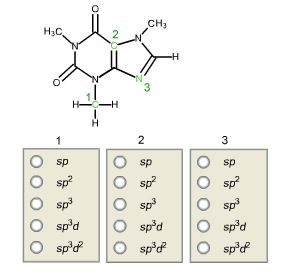

- CAFFEINE STRUCTURE WITH LONE PAIRS SOFTWARE
- CAFFEINE STRUCTURE WITH LONE PAIRS DOWNLOAD
Below are the list of the other names (synonyms) of caffeine including the various registry numbers, if available: The caffeine compound may be called differently depending on the various different situations of industrial applications.
Other names (synonyms) or registry numbers of caffeine. The molecular weight of caffeine is available in molecular weight page of caffeine, which is calculated as the sum of the atomic weights of each constituent element multiplied by the number of atoms of that element in the molecular formula. 
The molecular formula of caffeine is available in chemical formula page of caffeine, which identifies each constituent element by its chemical symbol and indicates the proportionate number of atoms of each element.
CAFFEINE STRUCTURE WITH LONE PAIRS SOFTWARE
The caffeine structure data file can be imported to most of the cheminformatics software systems and applications.
CAFFEINE STRUCTURE WITH LONE PAIRS DOWNLOAD
The structure data file (SDF/MOL File) of caffeine is available for download in the SDF page of caffeine, which provides the information about the atoms, bonds, connectivity and coordinates of caffeine.
Structure Data File (SDF/MOL File) of caffeine. The SMILES string of caffeine is Cn1cnc2n(C)c(=O)n(C)c(=O)c12, which can be can be imported by most molecule editors for conversion back into two-dimensional drawings or three-dimensional models of the caffeine. SMILES (Simplified Molecular-Input Line-Entry System) string of caffeine. QSPR ModelingĪdditional Information for Identifying Caffeine Molecule. Quantum Tools for IR Spectra Interpretationįaster Quantum Calculations with Pre-Computed ResultsĬhemical Big Data for Artificial Intelligence (AI) Developments In particular, the first solvation shell water molecules of calcium are accessible to forming more » acceptor hydrogen bonds, and this results in an enhancement of a post-edge peak near 540 eV.Thermophysical Property Datafile (IK-Cape File) for Process Simulators, e.g., Aspen Plusįree Radicals Thermodynamic Data for Oxidation, Combustion, and Thermal Cracking Kinetics For the divalent cations, we find that the hydrogen bonding characteristics of the more rigid magnesium first shell water molecules differ from those in the more flexible solvation shell surrounding calcium. Also observed are: (i) decrease in probability of salt contact ion pair as well as decrease in the solvent separated ion pair formation with increasing salt concentration, (ii) a modest second shell collapse in the water structure, and (iii) dehydration of hydrophobic atomic sites of caffeine on addition of =, have on the X-ray absorption spectrum of the respective solutions. The calculated hydrogen bond properties reveal that there is a modest decrease in the average number of water-caffeine hydrogen bonds on addition of NaCl salt. Furthermore, our calculated solvent accessible area values and cluster structure analyses suggest formation of higher order caffeine cluster on addition of salt. 
With increasing salt concentration, we observe enhancement of first peak height and appearance of a second peak in the caffeine-caffeine distribution function. The concentration of caffeine was taken almost at the solubility limit. The effect of salt concentration on association properties of caffeine molecule was investigated by employing molecular dynamics simulations in isothermal-isobaric ensemble of eight caffeine molecules in pure water and three different salt (NaCl) concentrations, at 300 K temperature and 1 atm pressure.







 0 kommentar(er)
0 kommentar(er)
